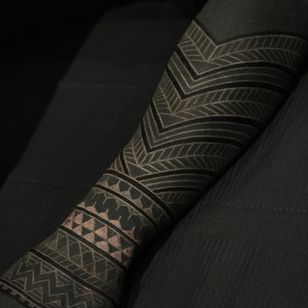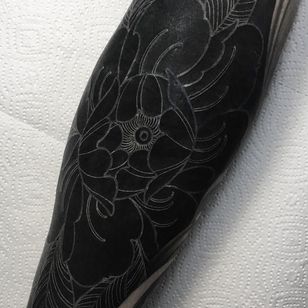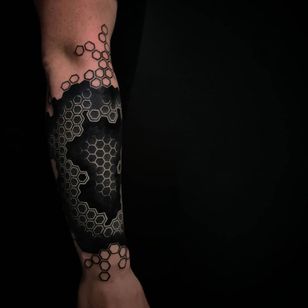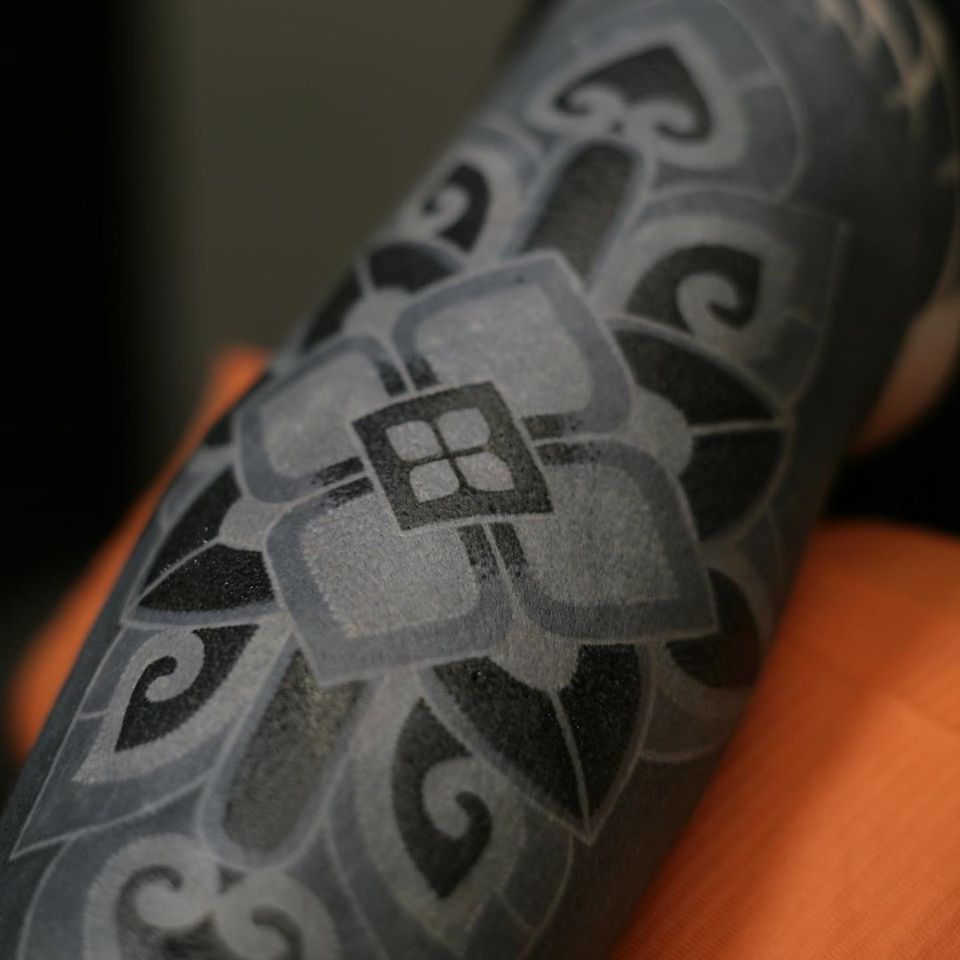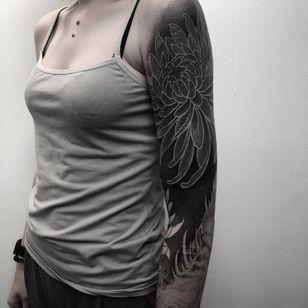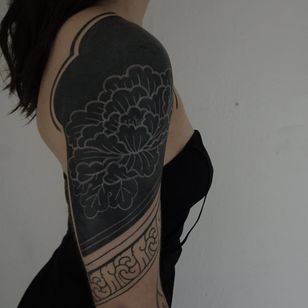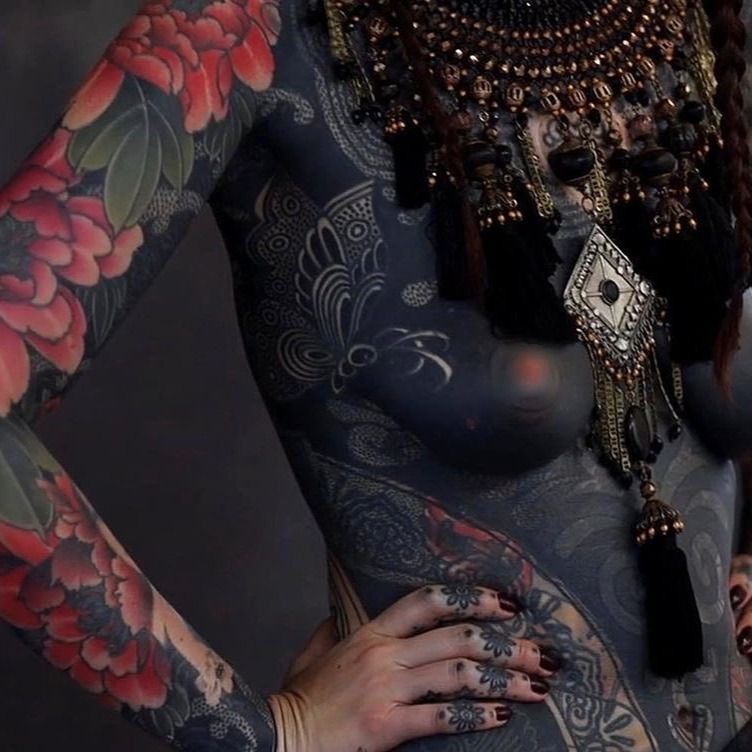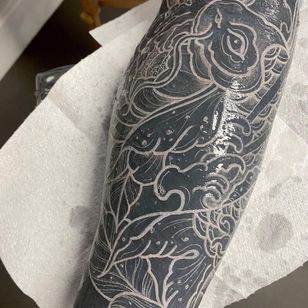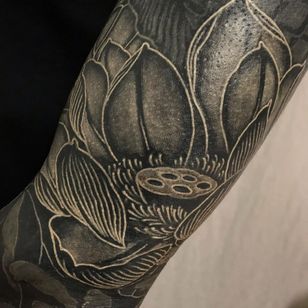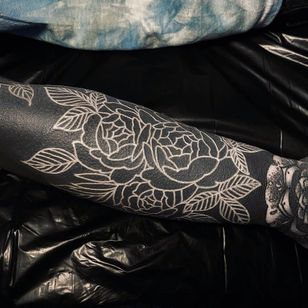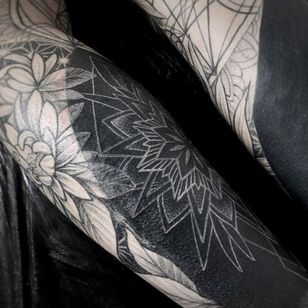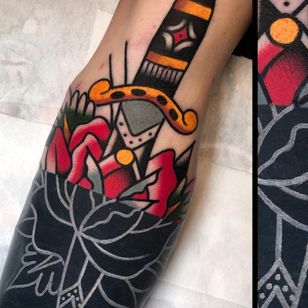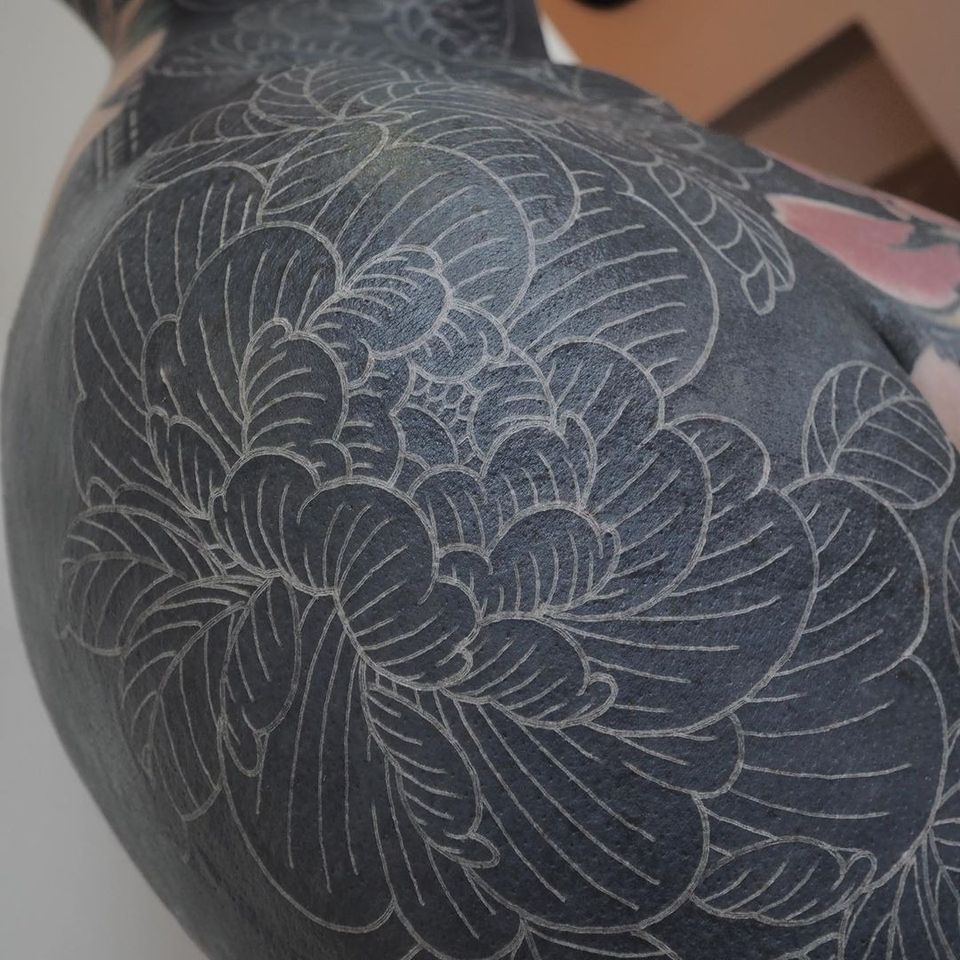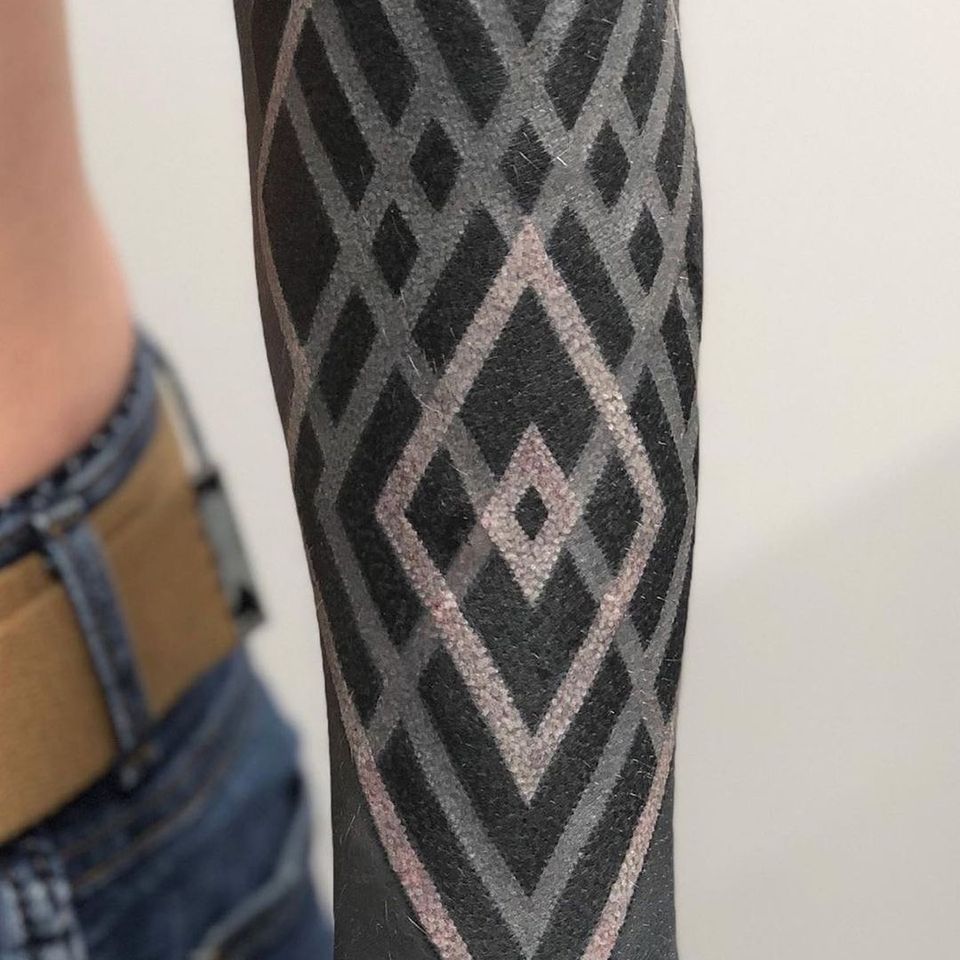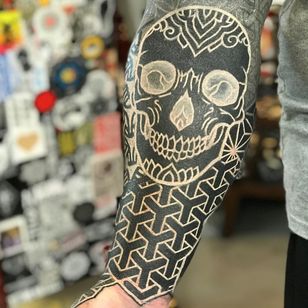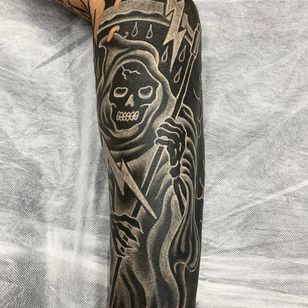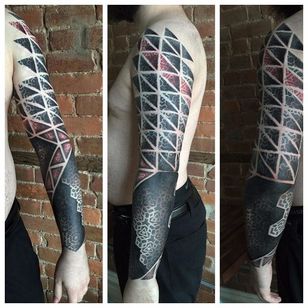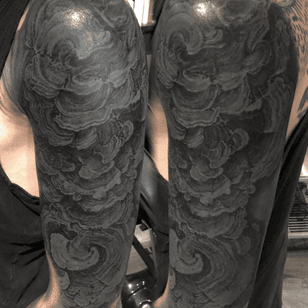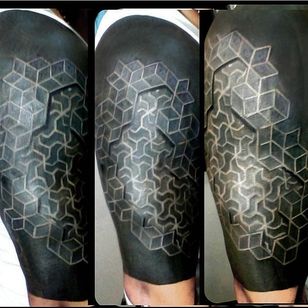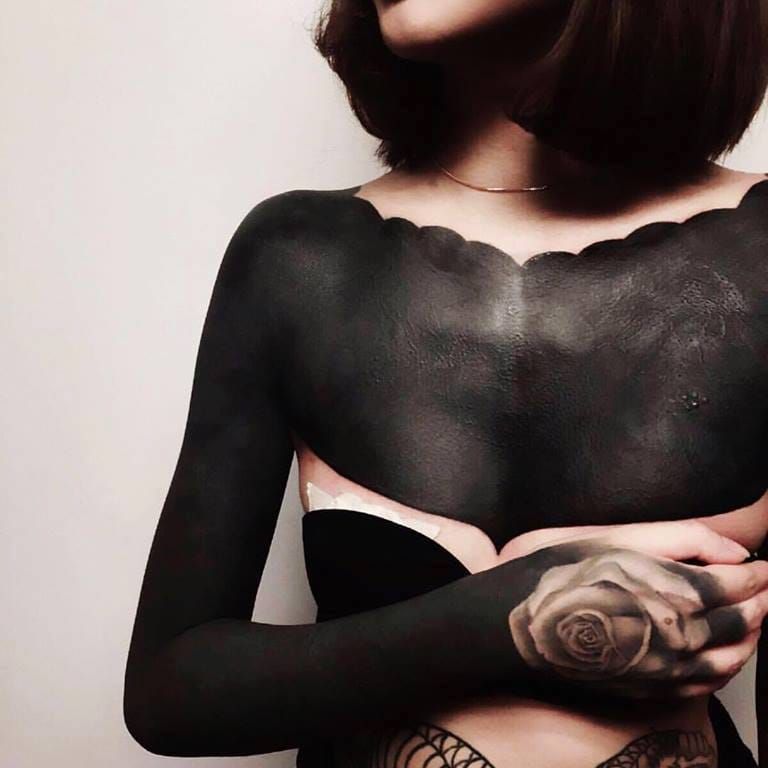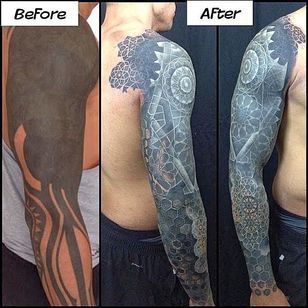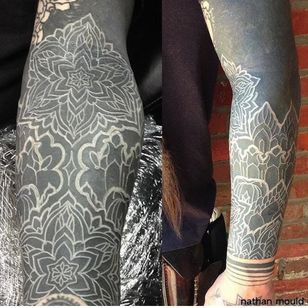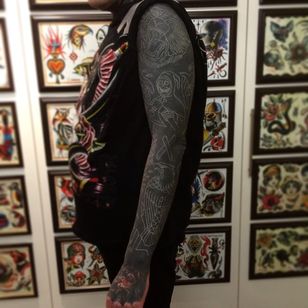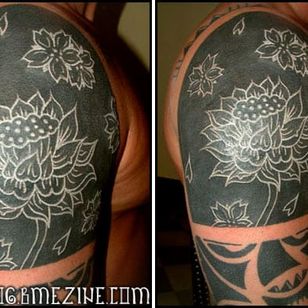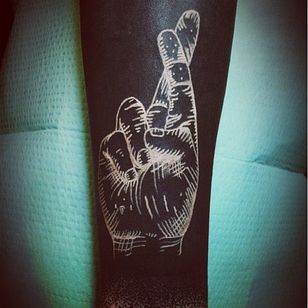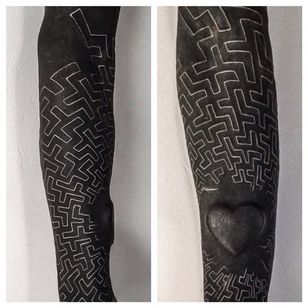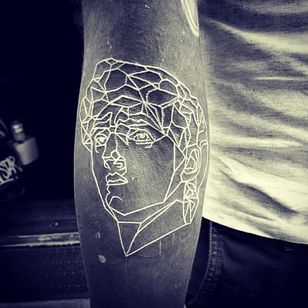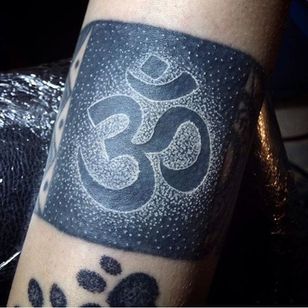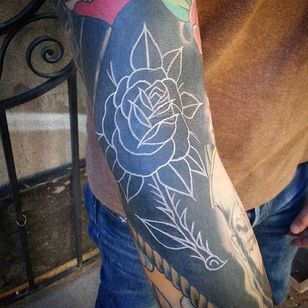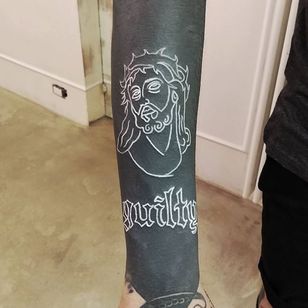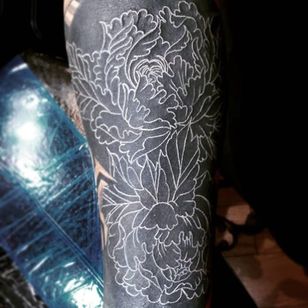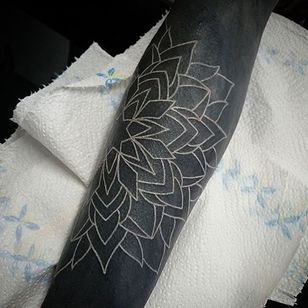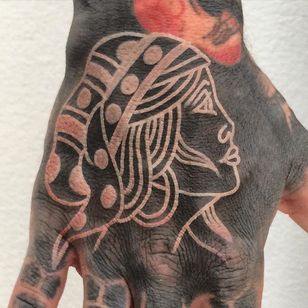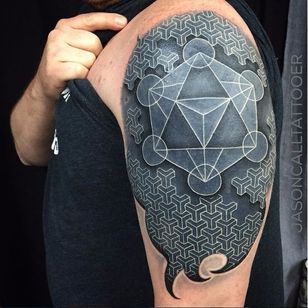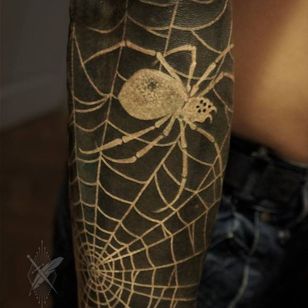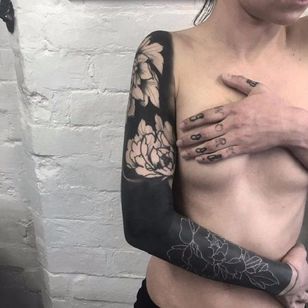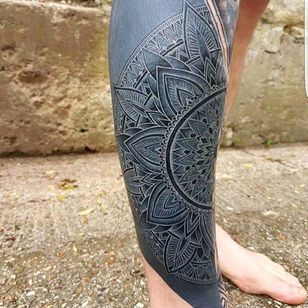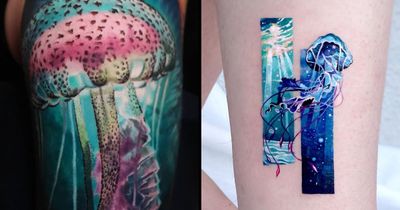White Ink Over Blackwork Tattoos
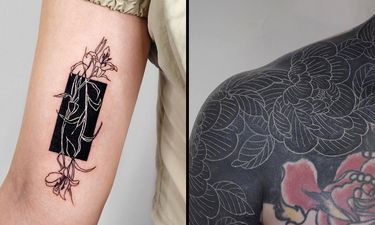
Summary
Wondering if you can cover up a black tattoo with white ink? Read along to explore white on black tattoo ideas, our FAQ, and more!
White Ink over Blackwork Tattoos FAQ
Can I hide previous ink using a solid black tattoo cover-up?
Yes! Covering your existing tattoo by process of “blacking it out” is entirely possible, though it will be a time consuming and expensive undertaking. Many people find that this style of cover-up affords them a creative way to hide unwanted large-scale tattoos.
Will the “white-out technique” help lighten my old tattoo?
Yes, using white ink on top of a pre-existing tattoo will definitely help to lighten the area. While white ink is helpful in creating a cleaner canvas for a cover-up, artists are on the fence about whether or not it produces long-lasting results. While this can be an effective step in preparing for your new piece, some artists warn that the old tattoo may show through in certain areas afterwards if the cover-up is not skillfully done.
Are blackout tattoos with white ink more expensive?
Yes, blackout tattoos with white ink overlays will be significantly more expensive than traditional cover-ups. Typically blackout tattoos cover large portions of the body, making it a time-consuming process for you and your artist, as it commonly requires several visits or more. Adding the white ink on top of the black will also take up to 5 sessions or more to be completed, so expect to budget for many long sessions with your experienced artist, and also account for touch-ups over the years.
Are blackout tattoos dangerous?
The quick answer to whether blackout tattoos are dangerous is yes, and no. Depending on the artist and ink being used, blackout tattoos can range from potentially problematic to completely safe. When electing to blackout a large section of your skin, make sure the ink used is organic and non-toxic to prevent any potential carcinogens from entering the body. For additional safety measures, make sure to never tattoo over skin irregularities like moles, as these areas need to be visible to detect any changes over the years. Even when using natural inks, there is still a risk of vitamin D deficiency if the area is large enough, so make sure to exercise caution before going forward with your blackout tattoo.
White Ink over Blackwork Tattoo by Ivan Hack #IvanHack #whiteinkoverblackwork #whiteinkonblacktattoo #whiteonblack #whiteink #blackwork #blackout
White Ink on Black Tattoos: The Ultimate Cover Up
White over black tattoos are a relatively new trend, offering those with unwanted large-scale pieces a creative and unique way to cover up their old ink. In this process, the artist essentially “blacks out” the old tattoo, by covering it entirely in heavy layers of black ink. Afterwards, white ink is added to provide imagery and decorative accents atop the black ink. So, if you feel stuck with a sleeve or large tattoo that you no longer love, there are definitely styles and methods available to cover up your piece and turn it into something new!
If you have tattoos that with difficult colors to laser off, (like green, yellow, light blue, or any neon tones), you may not want to endure the often painful and expensive process of laser tattoo removal. Luckily, there are other options available, like using white ink over blackout tattoos! Pieces of this nature possess strong contrast for design work, while also allowing the wearer to easily cover any size or color tattoo with absolute certainty.
White Ink over Blackwork Tattoo by cokney on inspiredtattooportraits #cokney #inspiredtattooportraits #whiteinkoverblackwork #whiteinkonblacktattoo #whiteonblack #whiteink #blackwork #blackout
Things to Consider When Getting a White-on-Black Tattoo
If you’re interested in covering up your old ink with a white-on-black tattoo, there are some important factors to consider before moving ahead. While these kinds of tattoos aren’t entirely new, many artists are still in the experimental phase with this style. So if you’re interested in a cover-up tattoo of this kind, it is imperative to make sure your artist is well-versed with the process and techniques used when tattooing white ink over blackouts. Be aware that artists who have not worked in this style may refuse your request as it is not a simple process and requires great expertise and experience.
One of the most talented white-on-black tattooers is artist Nathan Mould. Mould recommends that anyone seeking to get a black and white ink tattoo make sure to work with an artist who has successful experience within this style stating, “Unless you land a rare spot with an experienced artist, you’ll probably be rolling the dice and asking your tattooer to do the same.” While there are certainly talented artists out there specializing in this kind of work, it may take a bit of time and research on your part to find the right artist for you.
Aside from finding an experienced artist, another important factor to consider will be the time and money spent to complete your vision. To cover the pre-existing tattoo, your artist will need to fill the entire space with black ink. Covering up a large-scale design like a sleeve will take quite a bit of time using this method, with time provided for healing in-between sessions.
After the large-scale piece has been “blacked out”, the artist will then need to go over the top of it using white ink. It will often take 5 sessions or more to get the white ink to appear bold enough against the black background of the tattoo. Due to the extensive areas covered, and the time-consuming process of laying down the white ink, these types of tattoos often take years to be completed, making them a large investment in terms of money and time.
So before jumping into your white-on-black tattoo, make sure to contemplate the process and ensure that you’re ready for the time, research, and financial investment required to make your concept a reality.
White Ink over Blackwork Tattoo by hb tattoo bkk #hbtattoobkk #whiteinkoverblackwork #whiteinkonblacktattoo #whiteonblack #whiteink #blackwork #blackout
Frequently Asked Questions about White-on-Black Ink Tattoos
Are blackout tattoos with white ink more painful than “regular” tattoos?
While using certain ink colors will have no bearing on pain, white-on-black tattoos require artists to cover large areas of space on the body, typically resulting in higher pain levels for the client. If you are looking to blackout an arm or a leg, this will take many sessions and will typically be more painful than a smaller-scale traditional cover-up. Chances are, if you’re seeking to blackout a sleeve or leg piece, you’re accustomed to the pain of tattooing, so while the discomfort may not come as a surprise for some, this style is not recommended for those new to tattooing.
White Ink over Blackwork Tattoo by maxim.xiii #maximxiii #whiteinkoverblackwork #whiteinkonblacktattoo #whiteonblack #whiteink #blackwork #blackout
Are solid black tattoo cover-ups more toxic?
Unfortunately, many health officials and researchers agree that blackout tattoos may pose more health risks than other styles of tattooing. When getting a blackout tattoo, a large portion of your body must be covered with thick layers of black ink. While tattooing is traditionally considered to be pretty safe, there are ingredients within certain black inks that are considered to be carcinogenic, like benzo(a)pyrene.
To air on the side of caution, make sure to explore artists who use non-toxic and organic inks when creating your solid black tattoo. This is especially important because as tattoos age, they fade which causes small amounts of pigment to seep into areas like the lymph nodes. Blackout style tattoos also tend to fade more progressively than traditional pieces, causing more potentially carcinogenic matter to be released into the body. So if you’re interested in a white-on-black, or all-black piece, make sure to steer clear of any inks that aren’t 100% natural or organic in composition.
Another common concern regarding blackout tattoos is that they can limit the body’s ability to absorb Vitamin D, a critical component in maintaining bone density, regulating mood, and fighting disease. On the contrary, blackout tattoos have also been shown to help prevent the onset of skin cancer, as they act as a protective barrier against the skin.
Lastly, when considering a blackout tattoo, make sure that you do not place it over any areas containing skin irregularities, like moles or birthmarks. These areas must remain visible so that any changes in the size or shape of the irregularities are noticed immediately.
White Ink over Blackwork Tattoo by marktattooist #marktattooist #whiteinkoverblackwork #whiteinkonblacktattoo #whiteonblack #whiteink #blackwork #blackout
How do blackout tattoos with white ink age?
It is hard to definitively say how your tattoo will age, but traditionally all-black tattoos tend to break down and fade faster than other colors. Another factor to consider is that eventually, the white ink may begin to appear “yellow” or “brown”, depending on your natural skin tone. The tattoo ink lies beneath the epidermis, allowing it to act as a filter over the ink, so the darker your skin tone, the darker the white ink will appear. Always remember that white ink will only appear as bright as your skin tone. With this style of tattooing, you will probably need to schedule touch-ups throughout the years to keep it looking fresh and bold.
White Ink over Blackwork Tattoo by pauline tattoo #paulinetattoo #whiteinkoverblackwork #whiteinkonblacktattoo #whiteonblack #whiteink #blackwork
Black and White Tattoos
If you do not need a cover-up, or you’re uninterested in a large-scale blacked-out design, black and white tattoos may be an excellent consideration for you. These types of tattoos are not designed to cover up or obliterate the skin beneath, but instead, they work to use black and white inks to create high contrast Blackwork style pieces. This type of tattooing often features a nostalgic old-world feel and motifs like the occult, mythology, wildlife, and floral designs. If this style of tattooing appeals to you, rest assured that it can work wonderfully with any subject matter or concept you desire, and will provide your tattoo with a timeless and high-impact feel.
White Ink over Blackwork Tattoo by Ivan Hack #IvanHack #whiteinkoverblackwork #whiteinkonblacktattoo #whiteonblack #whiteink #blackwork #blackout
White Out Technique
When preparing for a cover-up, many people are electing to place white ink on top of their existing tattoos. This process is called the “white out technique” and it works to create a lightening effect on the original tattoo. The process of lightening your tattoo can be time-consuming, but some artists feel that it enables them to better hide pre-existing pieces.
On the contrary, some artists condemn the practice, stating that the colors beneath the white ink will eventually show through, and instead suggest to go the route of traditional cover-ups, using colors that will reflect the eye away from what is underneath, or undergoing laser tattoo removal beforehand.
White Ink over Blackwork Tattoo by underinkfluence #underinnkfluence #whiteinkoverblackwork #whiteinkonblacktattoo #whiteonblack #whiteink #blackwork #blackout
All images above curated by Justine Morrow. Please get in contact if you have any questions or feedback.
White-on-Black and Blackout Tattoo Artists
Finding an experienced artist is the first step in your journey to a killer white-on-black or blastover tattoo. To help save you time and research, we have compiled a list of some of the best white-on-black artists across the globe for you to explore!
Alex Mori, Quebec, Canada
Gareth Doye, Cape Town, South Africa/Copenhagen, Denmark
Chester Lee, Singapore
Daring blackwork by Chester Lee #ChesterLee #OrnamentalBlackworktattoos
Read also:
Blast Over Tattoos: Why Cover up? Let's Just Add Another Layer
How to Erase the Past: A Guide to Cover Up Tattoos
How can I get a tattoo removed?
If you are looking to get some blackwork spiced up a little bit with white ink, make sure to contact one of the artists in this article, or download our app to get more inspiration of possible black and white tattoo designs. Hope you enjoyed this look into an exciting new style - white ink over blackwork.
